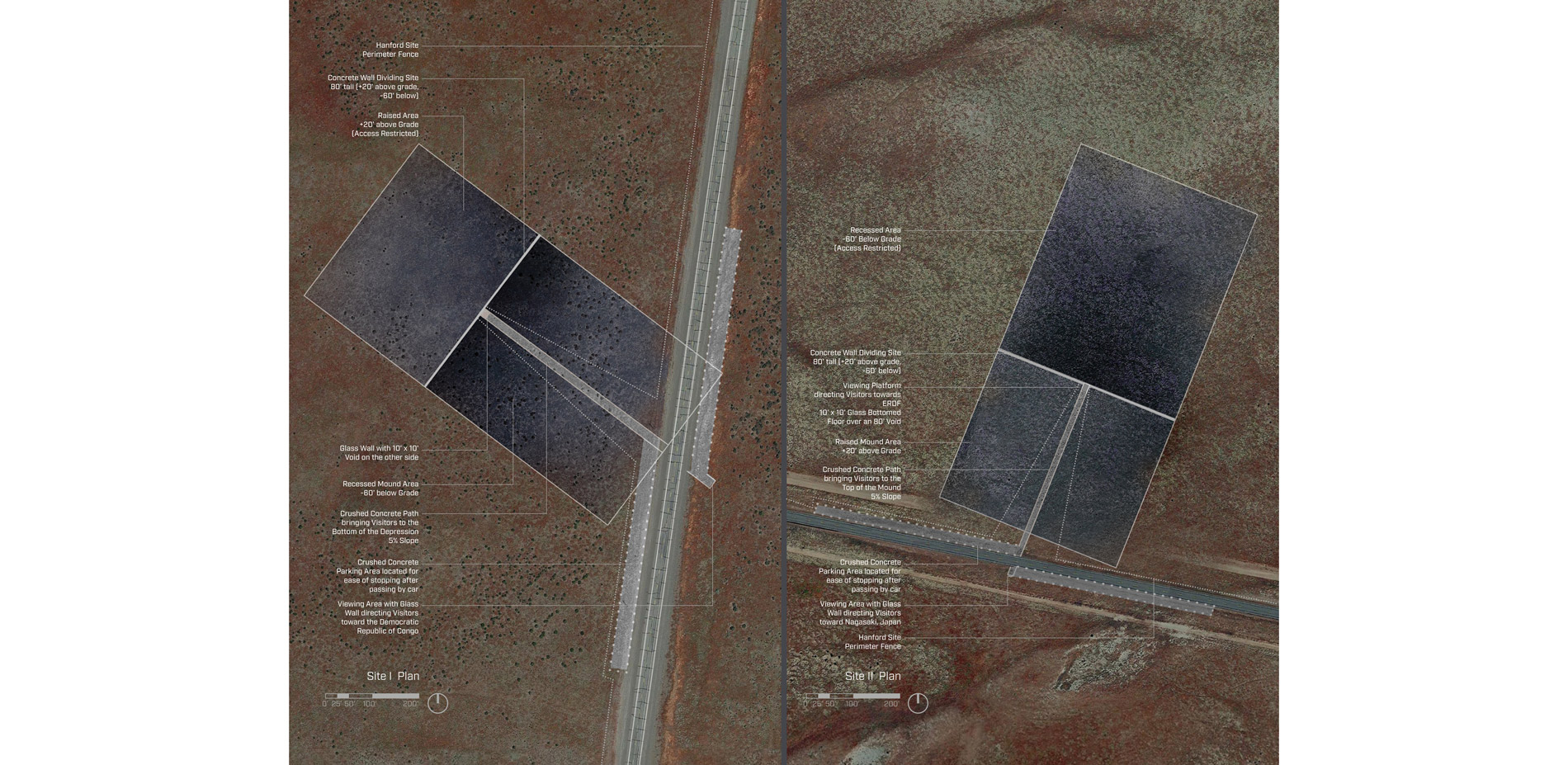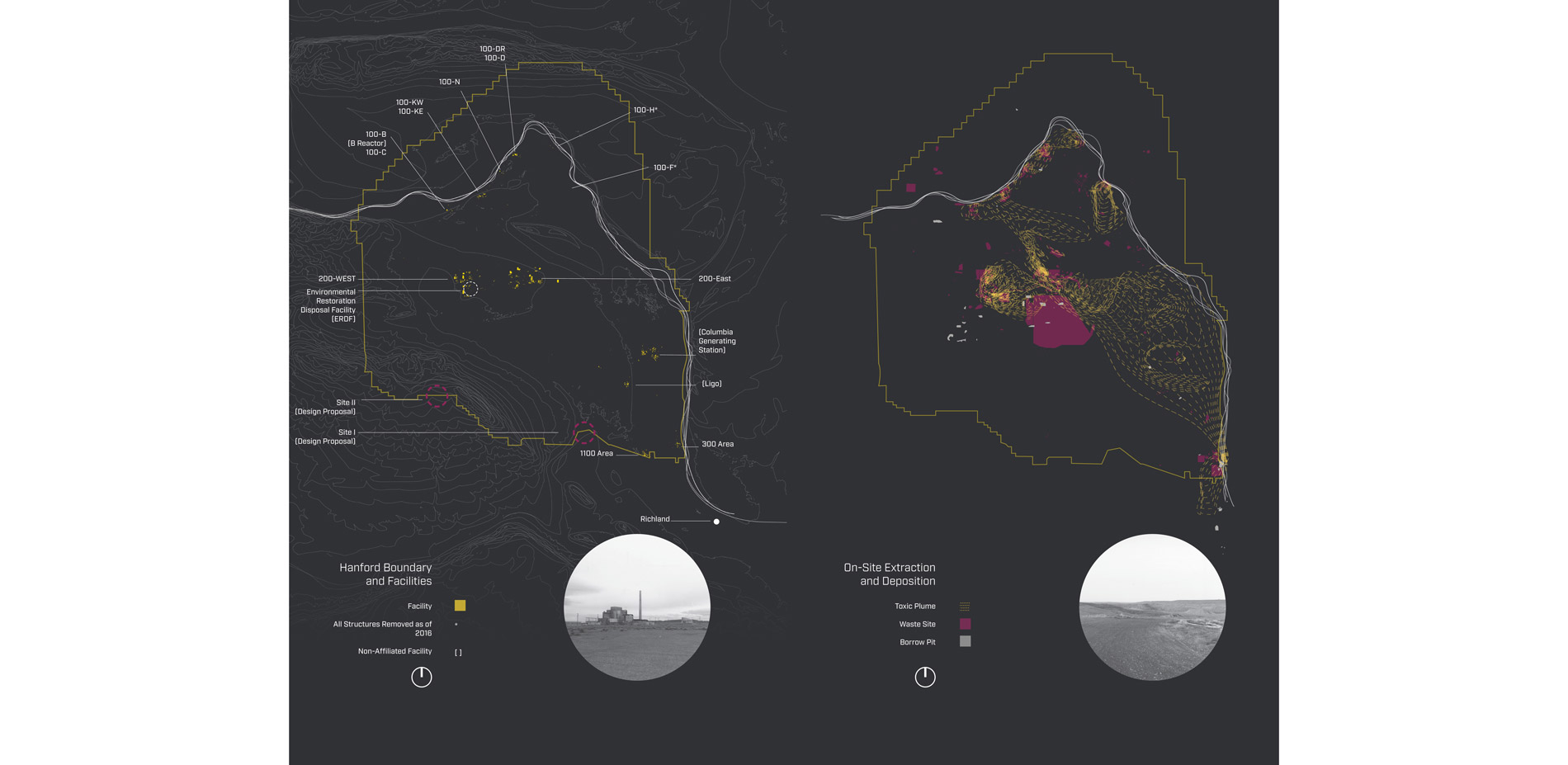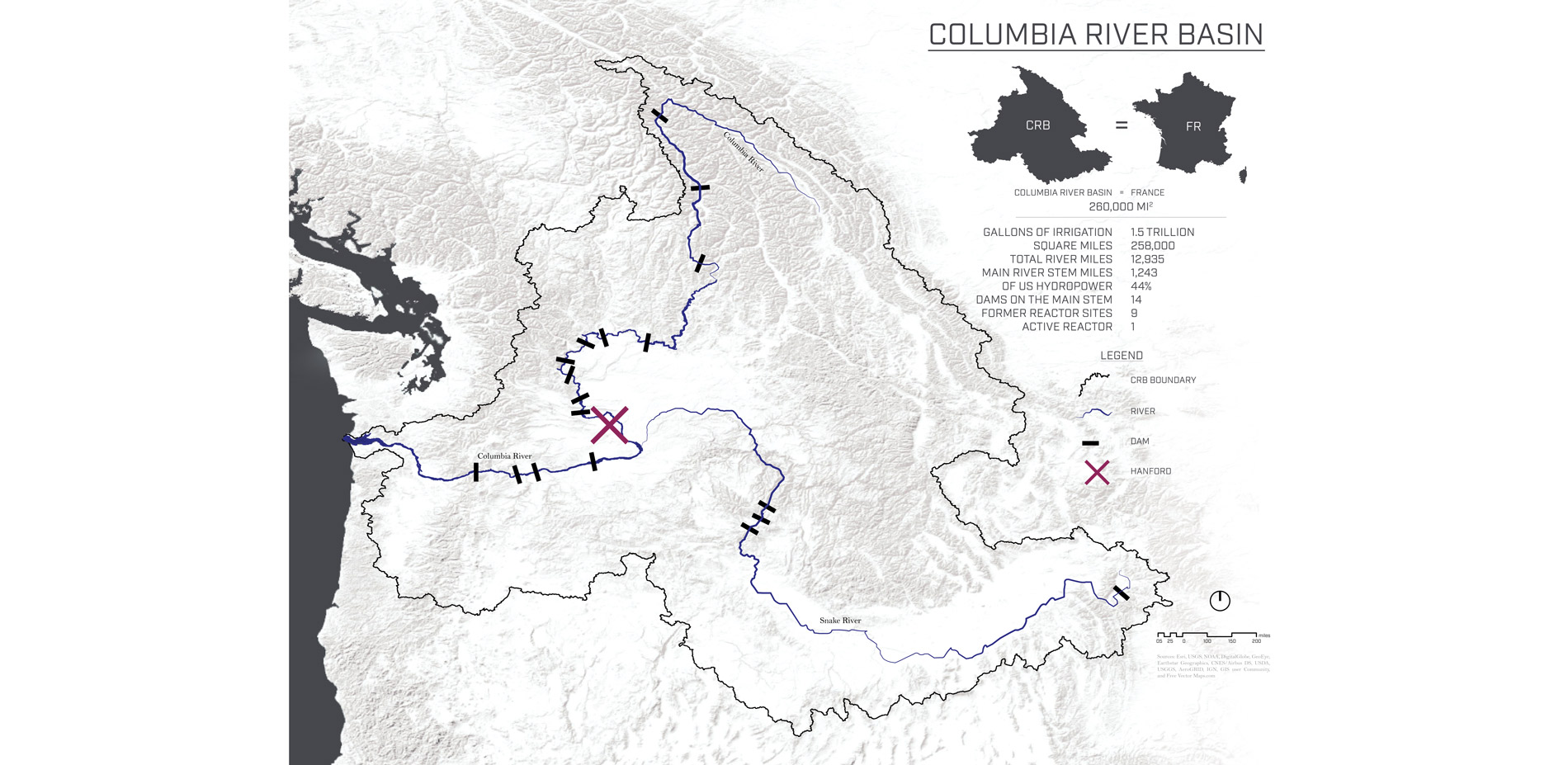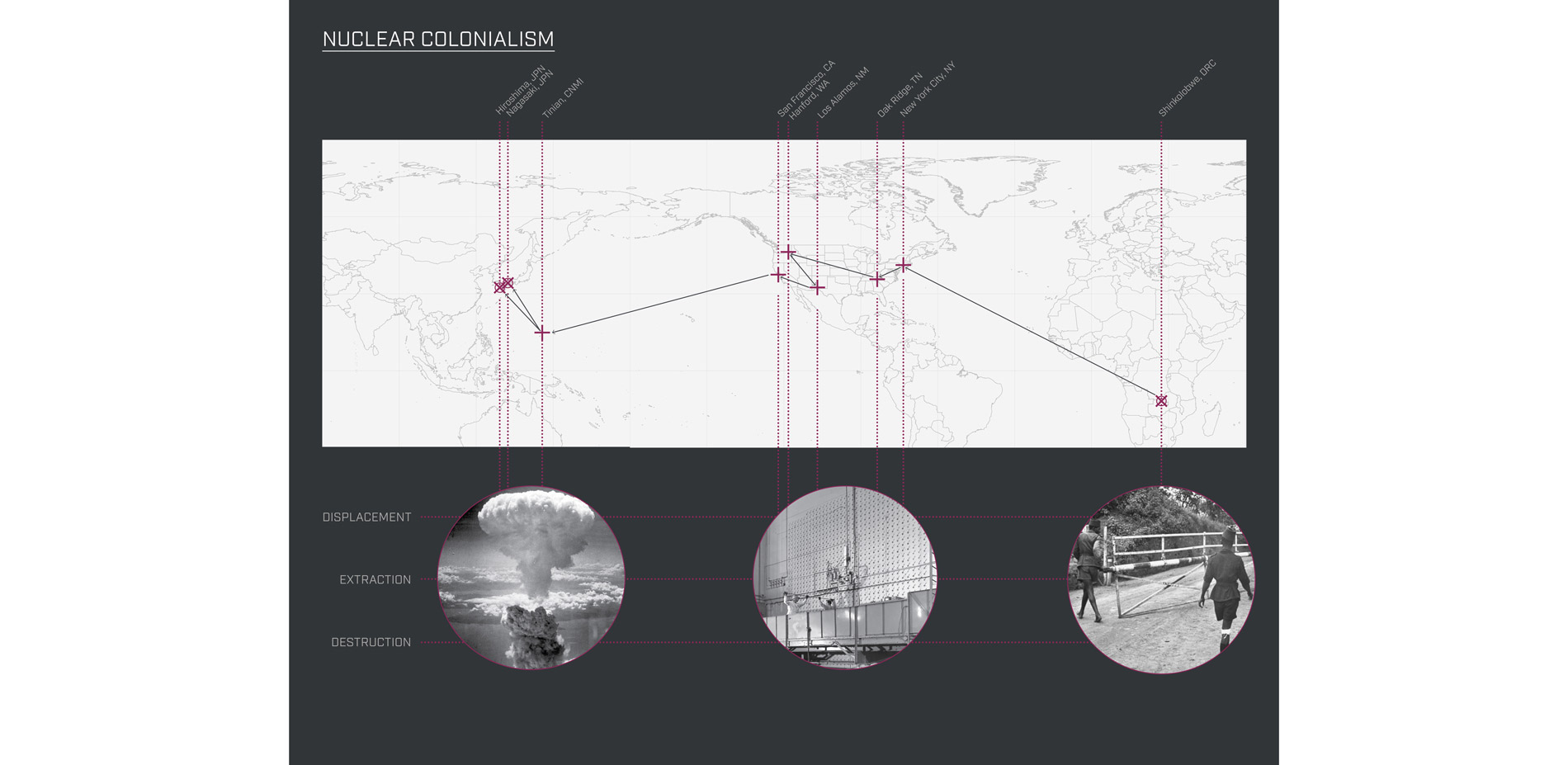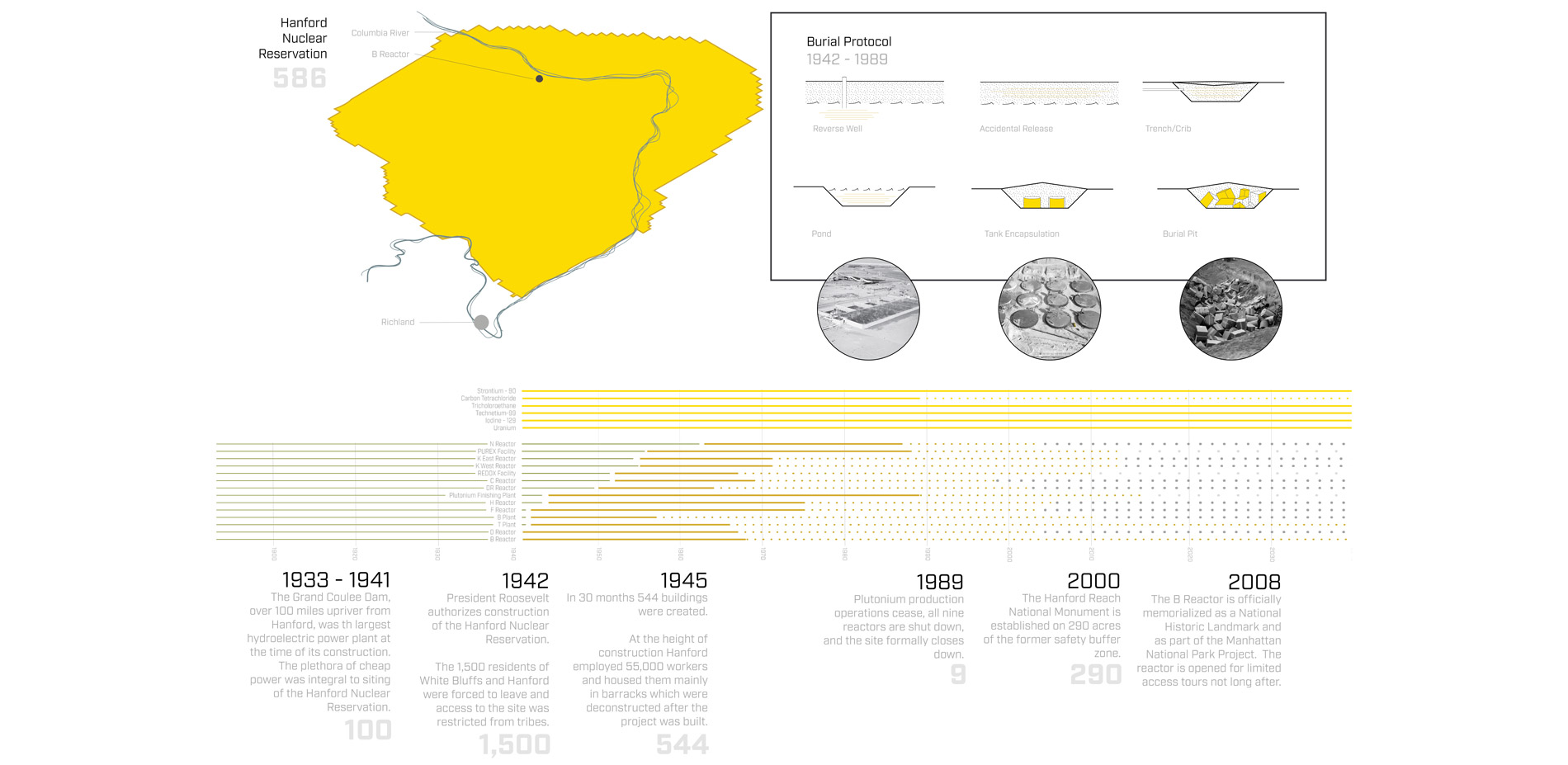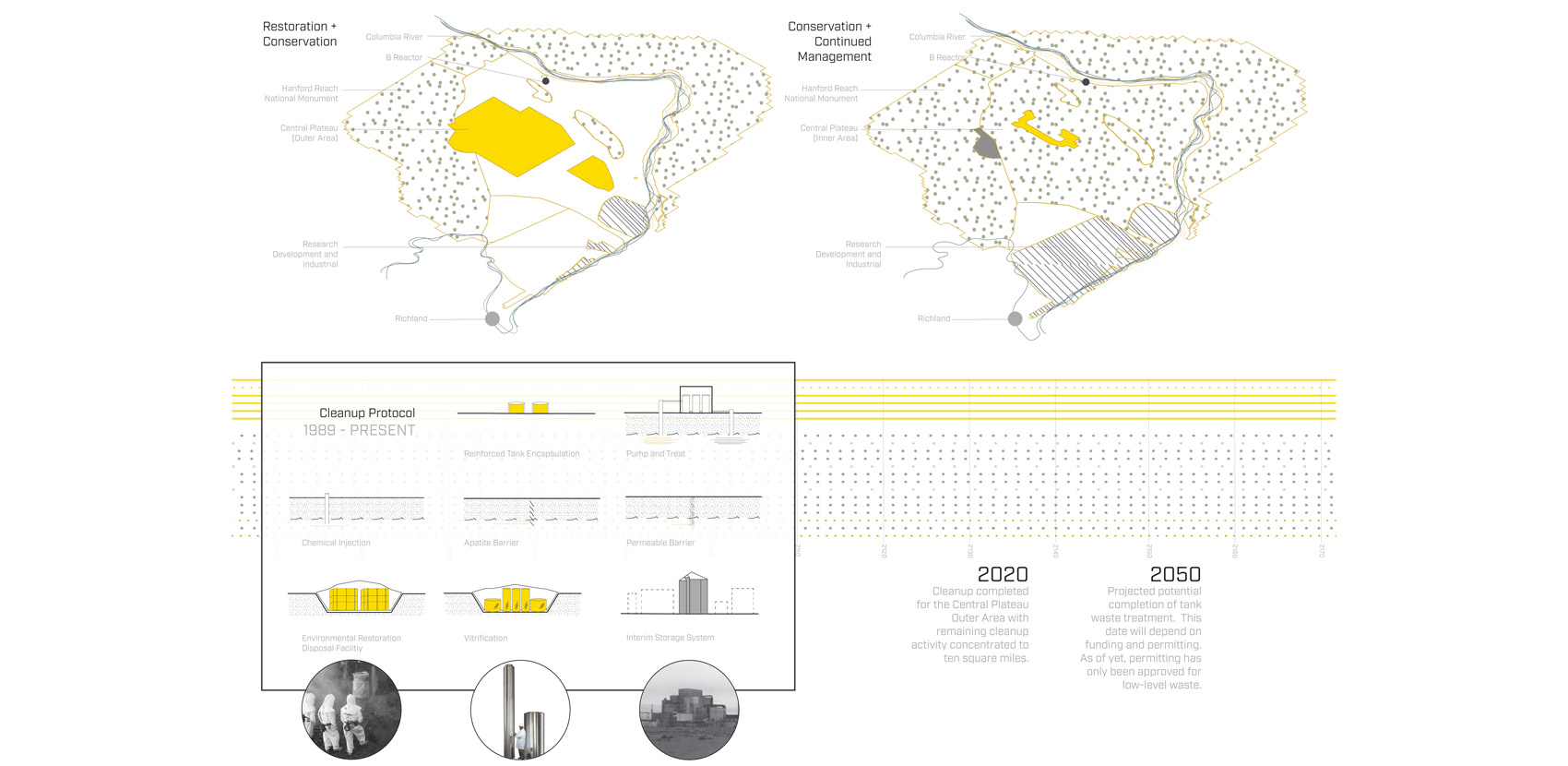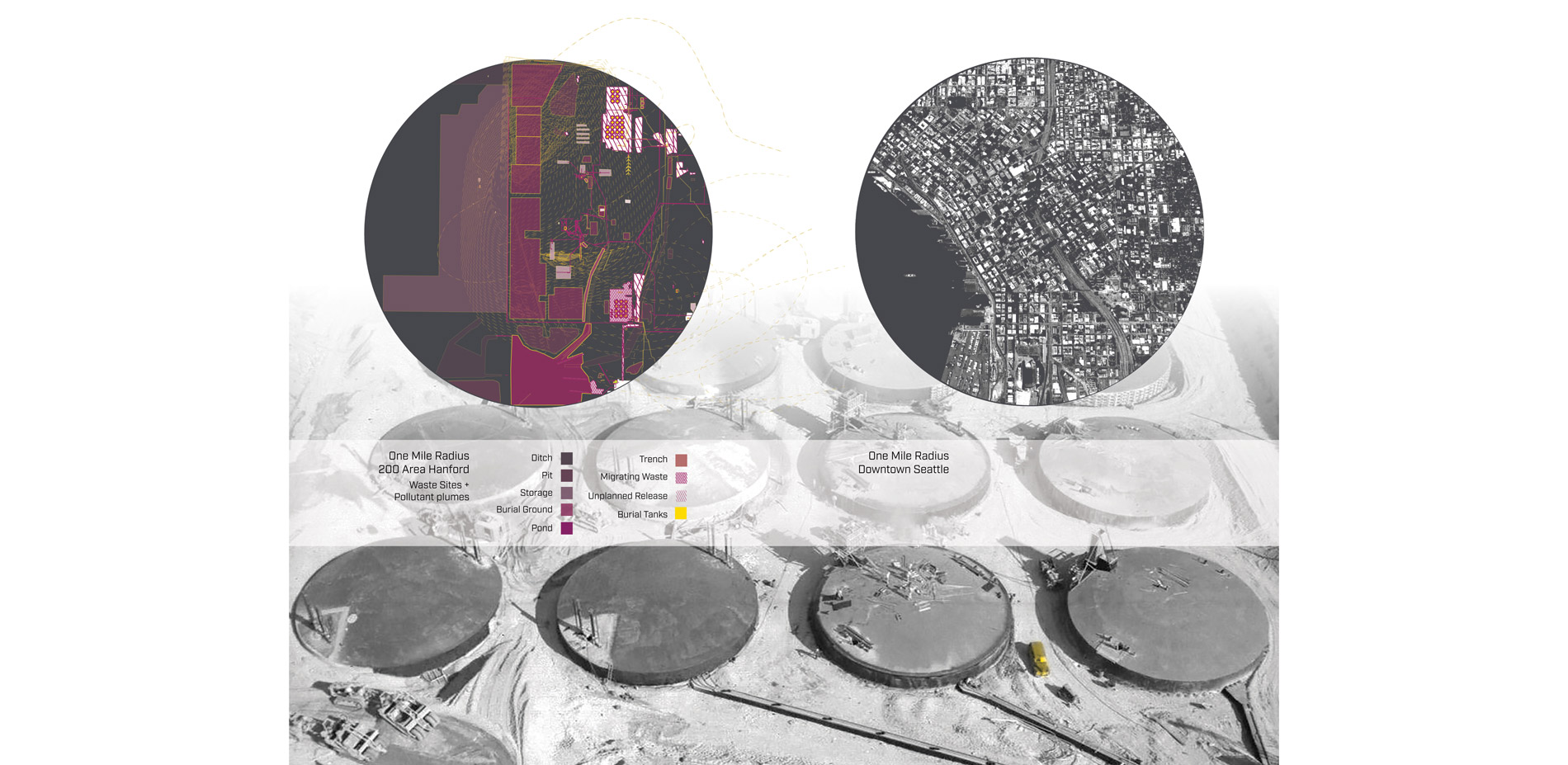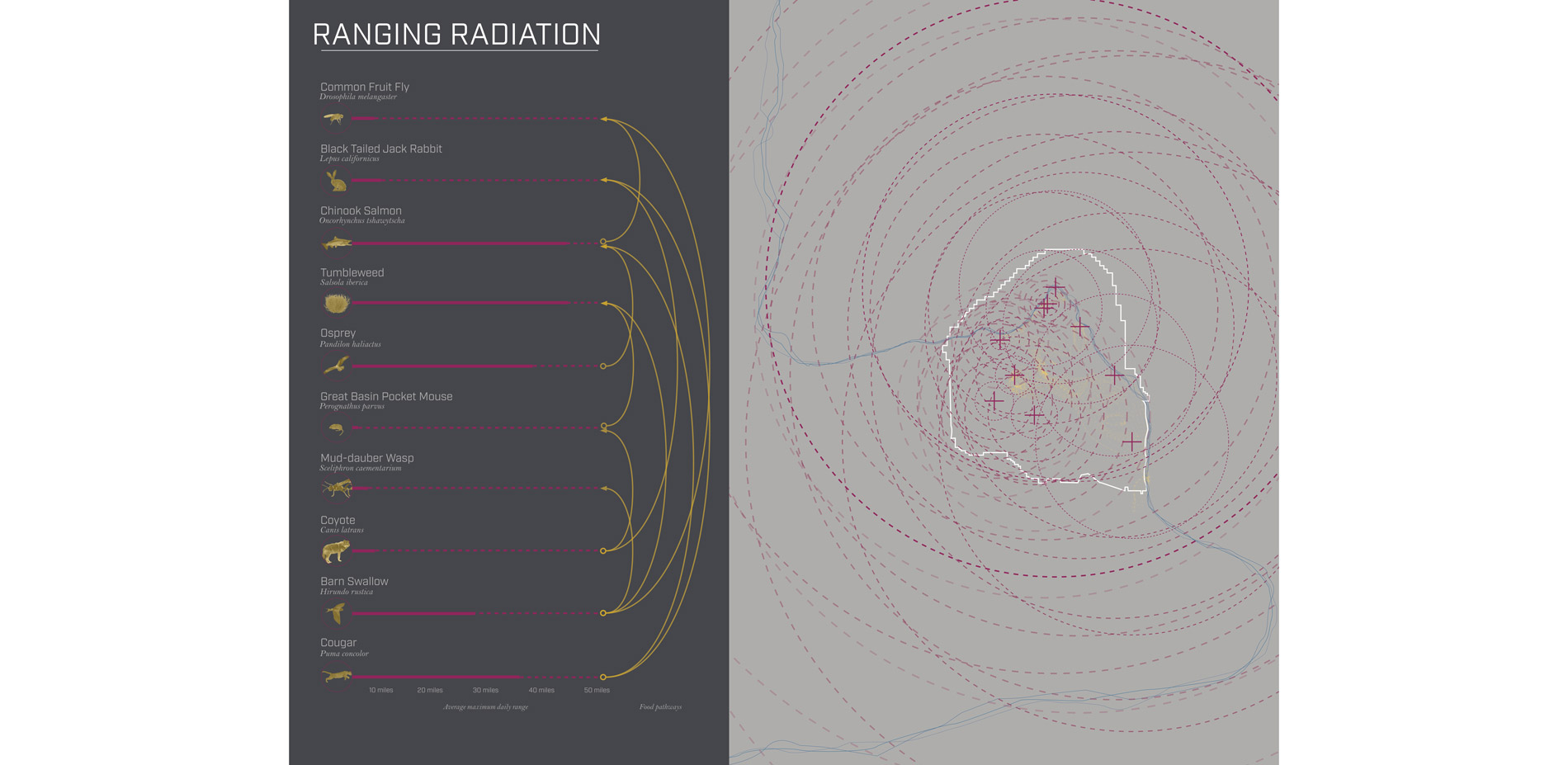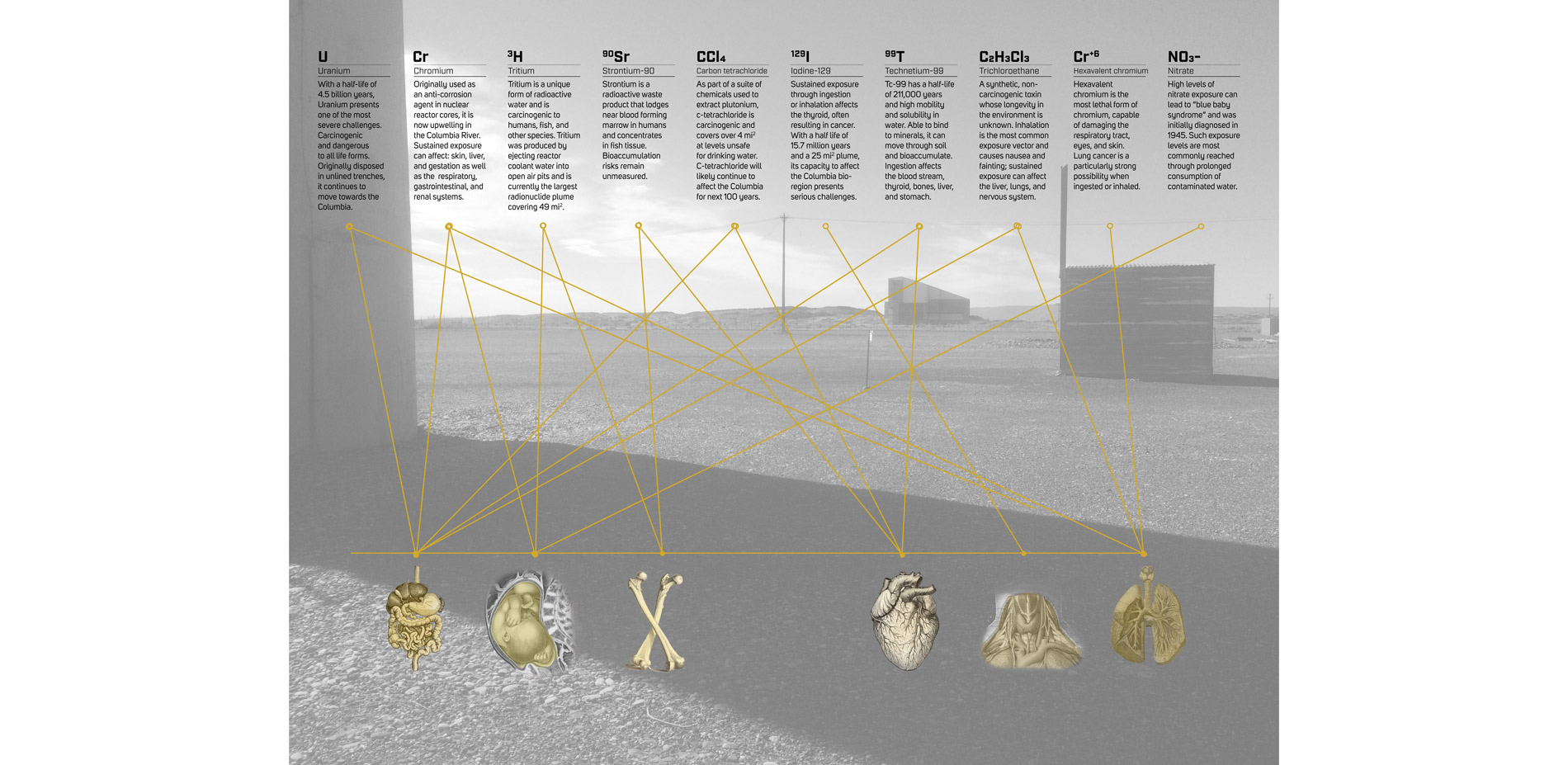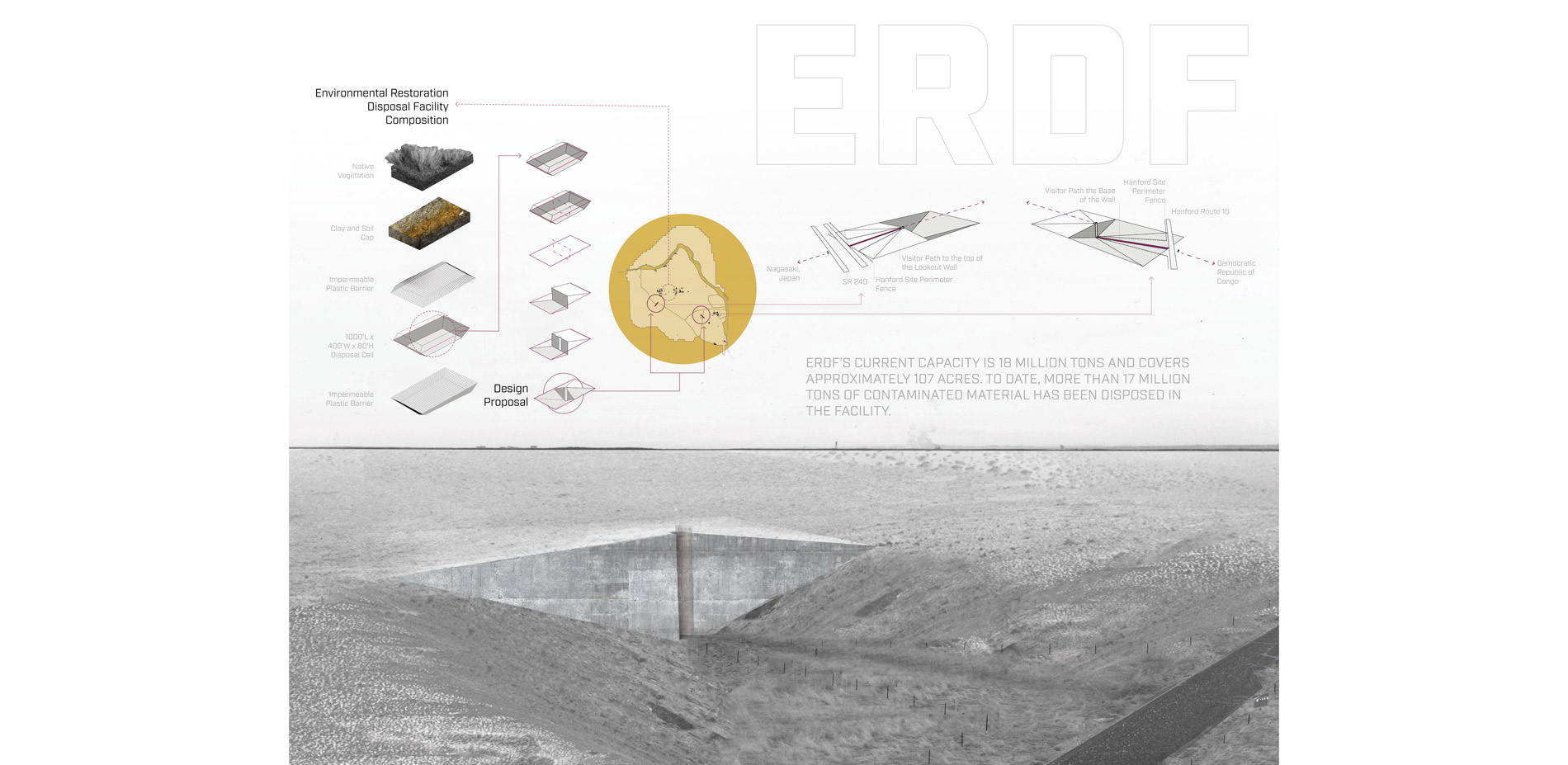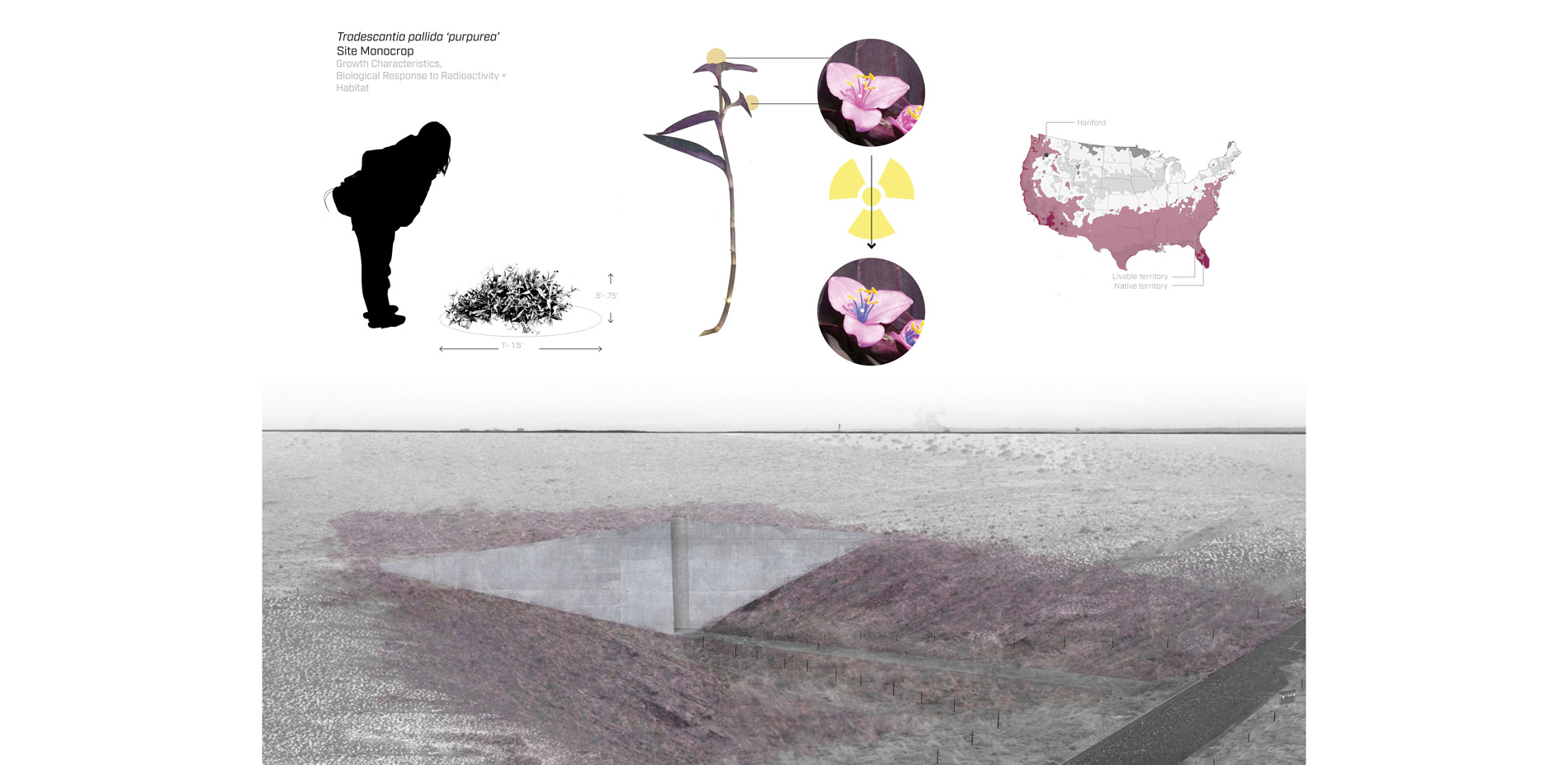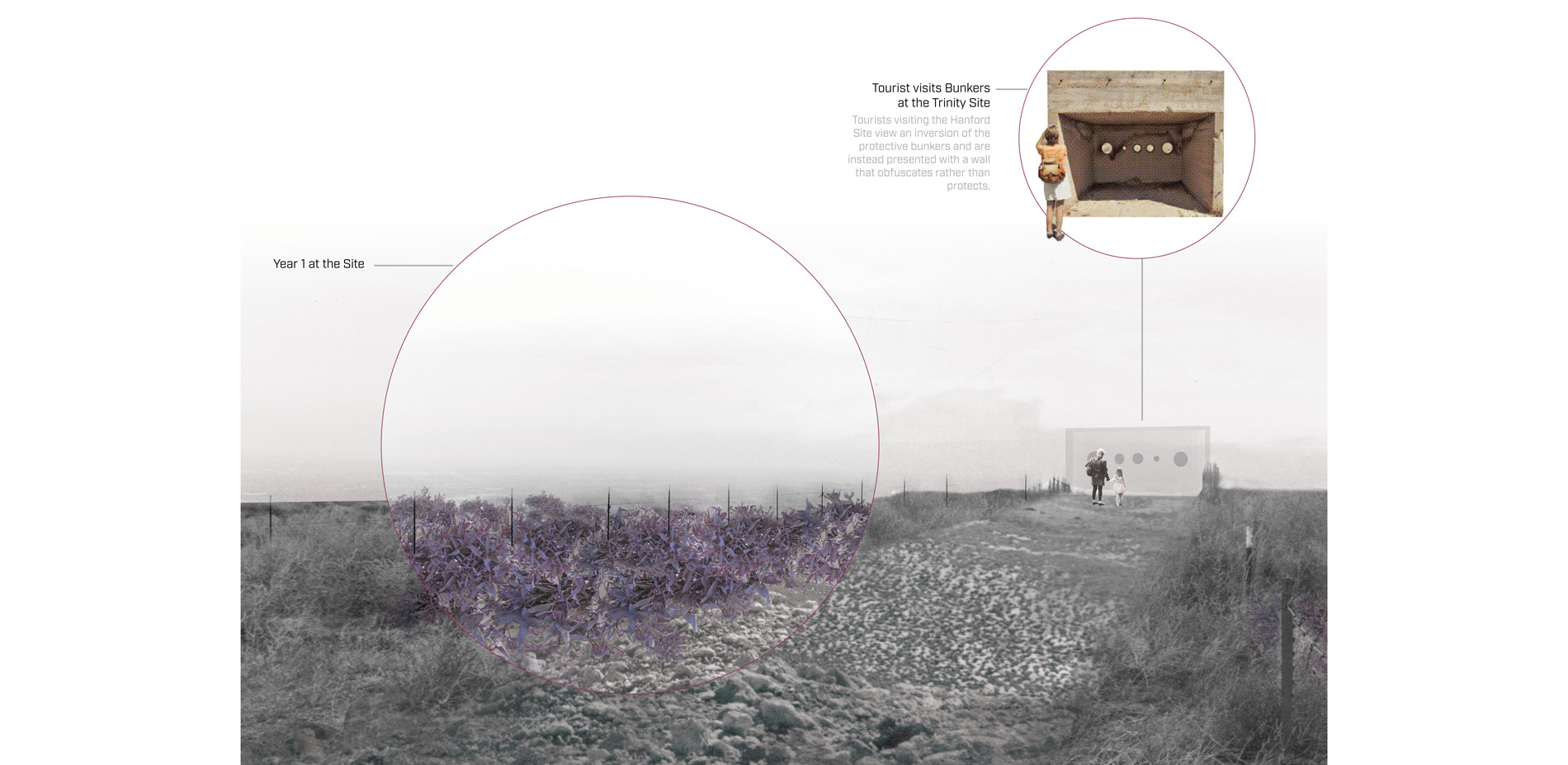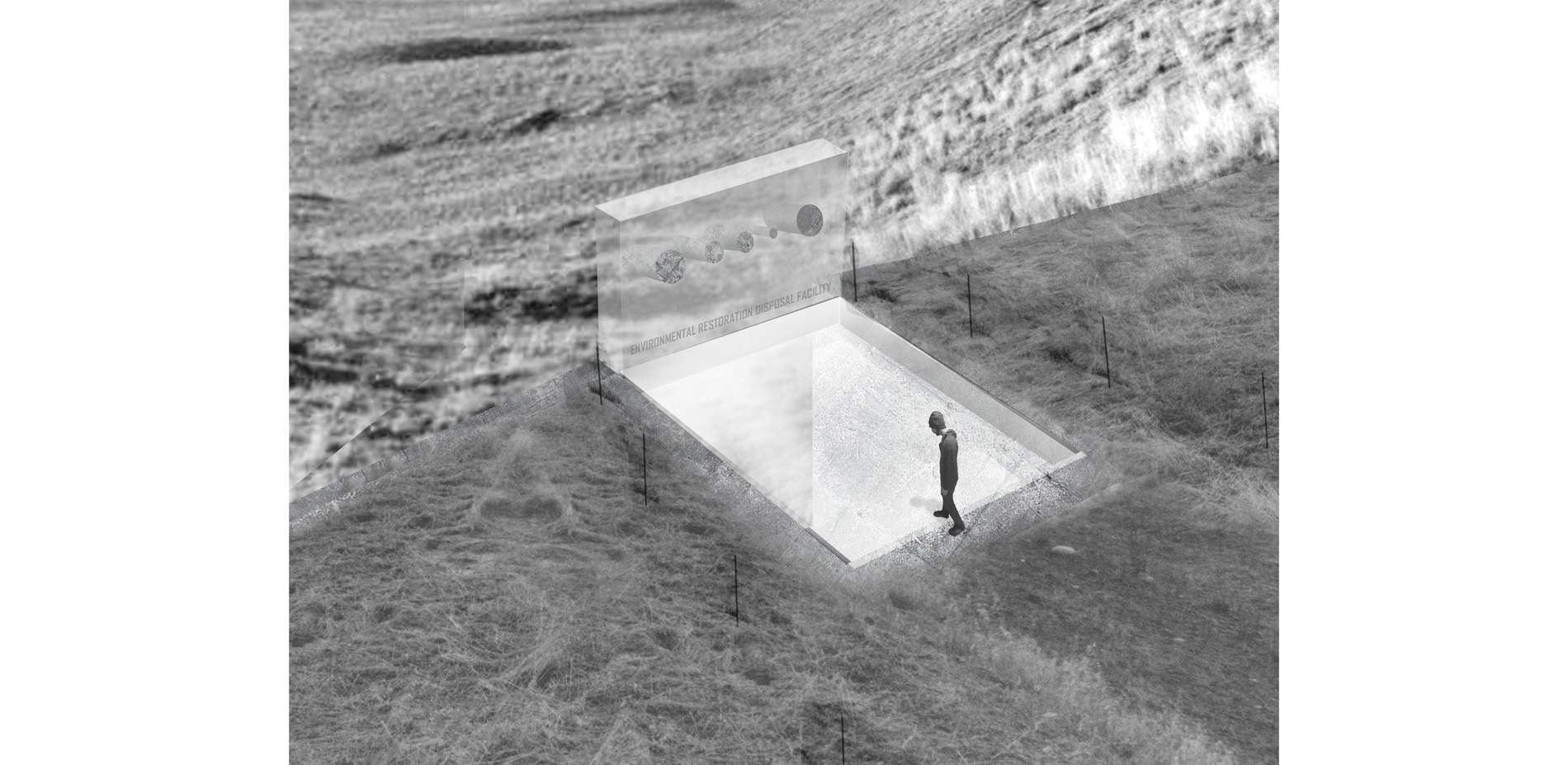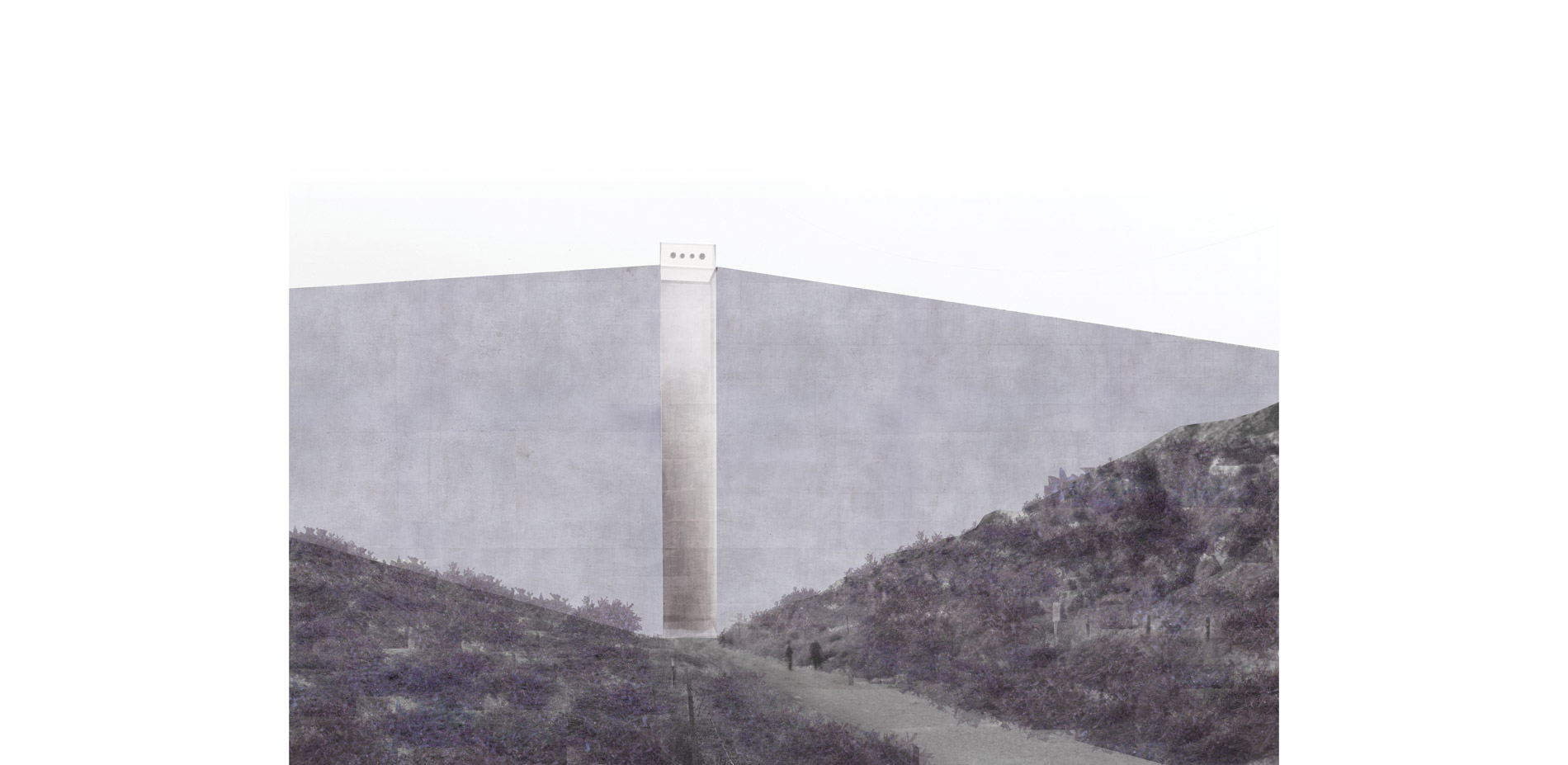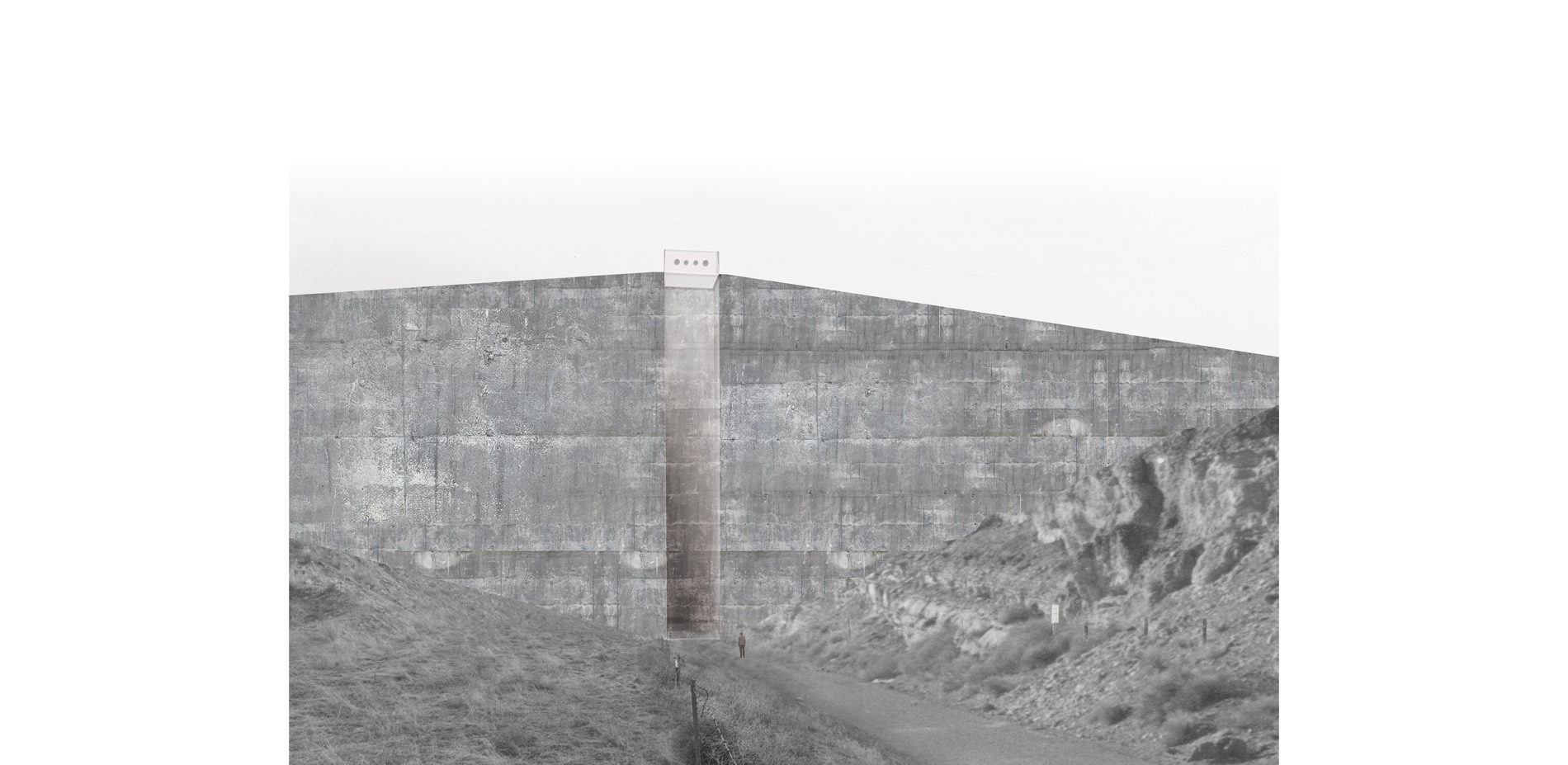Stop Making Sense: Spatializing the Hanford Site's Nuclear Legacy
HONOR AWARD
General Design
Hanford, WA, USA | Team: Kasia Keeley, Student ASLA; Andrew Prindle, Student ASLA | Faculty Advisors: Thaisa Way, ASLA
University of Washington
A simple and elegant idea.
- 2018 Awards Jury
PROJECT CREDITS
- Ken Yocom - Faculty Adviser
- Shannon Cram and Dr. Anna Storm - Nuclear Heritage Advisers.
PROJECT STATEMENT
Nuclear waste is a critical challenge to humanity. Since the Manhattan Project was initiated in 1942, the conjoined efforts of the Department of Energy and the Department of Defense produce and manage expansive nuclear energy and weapon systems. One of the most important sites for America's nuclear weapons production is the Hanford Nuclear Site in southeast Washington. Fueled by the fears of World War II and the Cold War, the aegis of patriotic necessity essentialized weapons production over understanding the ecological and cultural consequences of nuclear weapons.
Nuclear waste represents ongoing violence whose toxicity and capacity to change bodies and ecosystems persists throughout its radioactive lifespan. Combined with its capacity to eschew political boundaries and confound our attempts at containment, nuclear waste realizes a problem whose consequences will be experienced for generations to come requiring concerted engagement. Instead of recognizing nuclear waste as a purely technical problem requiring rigidly optimized solutions, this project argues for connection to the scale of nuclear waste and violence through design interventions that spatialize the waste containment process.
PROJECT NARRATIVE
The Hanford Nuclear Reservation is in southeast Washington state, occupying 586 square miles of shrub steppe habitat, and consisting of a National Monument, science laboratories, cleanup efforts, and home to two-thirds of the United States' high-level nuclear waste (Harden & Morgan). Hanford is a sprawling network of retired factories and supporting facilities dedicated for 44 years to the production of fissile plutonium for nuclear weapons (Harvey). This site is one in a series across the United States dedicated to producing nuclear weapons for the U.S. during World War II and the Cold War. Of these sites, Los Alamos in New Mexico, Oak Ridge in Tennessee, and Hanford have been awarded designation as the Manhattan National Park Project. While the narrative adopted by the National Park Service regarding these sites is primarily focused on the technological and historic significance of these places, there is also a unique opportunity to challenge dialogue about the necessity of nuclear weapons as well as to confront the environmental and cultural burden exacted by the production and maintenance of such weapons.
The story of the United States's nuclear ascension is one consistently told apart from the landscapes used to power, metabolize, and undergo the environmental burden of nuclear weapons. Excising Hanford's landscapes' role from its cultural and environmental legacy anesthetizes a broader and more inclusive understanding of our nuclear heritage by rendering it a patriotic and politically necessary endeavor with merely unfortunate consequences.
We argue that a spatial intervention can catalyze understanding of the subjugation and on-going manipulation of Hanford's landscape and thus expand discourse beyond the confines of understanding nuclear waste as a purely technical problem. This can further invite a more intimate discussion of how land and water are employed by state actors and how cultural and environmental narratives are curated and policed just as aggressively as territory is.
Hanford holds the United States' single largest concentration of high-level nuclear waste by volume, rendering it one of the most toxic sites in the western hemisphere. During Hanford's operation, 450 billion gallons of nuclear byproducts were dumped directly into the soil; 30,000 gallons of Columbia River water forced through each reactor core every minute of operation, cooling for only several hours before being returned to the Columbia; and 177 subsurface tanks were constructed for holding over 53 million gallons of sludge leaking approximately 1 million gallons of radioactive sludge into the ground resulting in 60 square miles of contaminated groundwater beyond acceptable health limits (DOE 2015, DOE 2017, Brown 2015, Gerber 1992).
Despite Hanford's pervasive toxicity, large expanses of the site, originally set aside as a security buffer between military operations and civilians, have resulted in unintentional preservation of the largest intact shrub-steppe ecosystem, previously unknown plant species, and the last free flowing stretch of the Columbia River (Gerber 1992). As such, Hanford presents a strange paradox of conservation and toxification: seemingly wild and open yet also meticulously surveilled and irredeemably toxic (Cram 2015). The juxtapositions of toxicity and wild, open space at Hanford prompted an investigation into processes of territorialization, land use, and legibility that challenge dominant narratives and provoke new thinking about ecology, heritage, and design.
Since Tri-Party Agreement was signed in 1989, Hanford has transitioned from production to clean-up. The end goal is to consolidate irradiated materials in the Environmental Restoration Disposal Facility (ERDF) located in the site's Inner Central Plateau. Liquid waste still present on the site is slated for transformation into glass via a proprietary vitrification process being pioneered by the same lab, Pacific Northwest National Laboratory, that helped establish technical systems during Hanford's operating years. Efforts to 'clean-up' the Hanford Site's waste is effectively a series of iterative attempts at containing its effects on water, soil, animals, and humans from the scale of the fruit fly to that of the watershed (Cram 2015). Decades of production-centric behavior coupled with incommensurate understanding of how radiation impacts and moves through environments has created a truly wicked ecology (White 2001). Hanford's 'clean' is closer to a material choreography organized as an indefinite risk management process than ecological restoration of the landscape.
While the amount of waste that has accrued over 44 years of operation may be spatially incomprehensible, there is indeed a size and scale to ERDF. The disposal cells at ERDF are 400' wide, 1000' long, 60' deep and will rise 20' above the landscape once capped. These cells currently occupy 107 acres with new cells added to accommodate the DOE's cleanup effort as needed (DOE 2017). Akin to standing next to a strip mine, ERDF represents an industrial solution to a military-industrial problem.
Our design proposes two installations to engage ERDF through methods not employed by the DOE. Site I and Site II each replicate the dimensions of a single ERDF cell and place it adjacent to roads running along Hanford's boundaries. Half of each site will excavate 60' down, and the other half uses excavated soil to lift the topography 20' above grade with a concrete wall bisecting the cut/fill operation. Visitors to Site I descend to the bottom of the wall and at Site II they may walk to the top. Embedded within the concrete wall at each site is a glass chamber devoid of anything, including waste. Site I is oriented towards the Democratic Republic of Congo, where significant portions of uranium were mined for weapons (Alvarez, 2016), Site II points to Nagasaki, Japan, where Hanford's plutonium was used to end World War II. Through these orientations, each site connects visitors to global sites of extraction and deposition that have resulted in destruction far greater than what is immediately visible.
These installations use the tools of industry to comment on industry. Influenced by the Land Art movement, this work does not try to ameliorate or diminish the impact Hanford has on the surrounding environment. Instead, it uses ERDF's dimensions as a scalar tool to better connect the visitor with key parts of our nuclear heritage too often overlooked: nuclear violence and waste legacies. Fixed solutions or narratives are not presented, and the installations disrupt the landscape to demonstrate the scale of one ongoing attempt at containing waste. The displacement of soil, division by concrete walls, and hollow glass columns each speak to the consequences of moving vast numbers of materials and people for nuclear armament.
The pervasive pollution at Hanford, while exceptional, is not unique. Today, notions of nuclear destruction have experienced an unfortunate rise in prominence in national and international dialogues as tensions flair amongst the world's nuclear powers; such politically powered discussions continually fail to address both the violence endemic to the weapon's production and their ongoing legacies playing out across the United States at and around former nuclear production facilities, that have come to represent a "permanent archipelago of national sacrifice zones" (Gusterson 2017).
The ongoing consequences of nuclear weapons and waste will continue to impact the world in ways that cannot be ameliorated or erased. Design should engage the public with landscapes of waste as a way to reveal the unconfined impacts of reconfiguring landscapes to produce power through territory and narrative. These proposed interventions do not focus on the scientific and engineering accomplishments of Hanford essential to the heritage discourse of the DOE and NPS, but on the exploitive, extractive, and environmentally degrading military-industrial operation that has created a legacy within the landscape that will last for hundreds of thousands of years.
